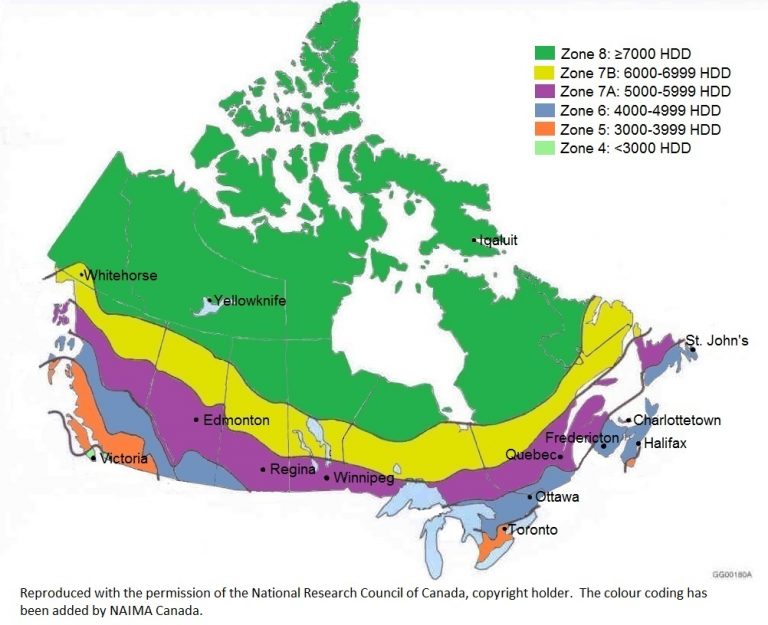Piping and Duct Codes and Standards
Codes & Standards
In Canada, building codes are under the jurisdiction of the provinces and territories, with some chartered municipalities that have the power to mandate their own standards for their building by-laws. These jurisdictions are able to create their own codes, or they can adopt (or adapt) the national model codes, currently the 2015 National Building Code (NBC).
In December 2012, the Federal Government issued an amendment to the 2010 NBC to incorporate energy efficiency standards in housing (Section 9.36), and issued standards for energy efficiency in commercial, industrial, institutional, and large residential buildings [currently the 2015 National Energy Code of Canada for Buildings (NECB)]. For the first time, energy efficiency was introduced to the national model codes.
U-Value
The 2015 National Energy Code for Buildings (NECB) expresses insulation requirements not as minimum thermal resistance (R effective), but as maximum thermal transmittance, designated by the letter U. U is simply the reciprocal of R (effective). It is customary, not obligatory, for U to be expressed in metric units.
Climate Zones and Heating Degree Days
The Canadian climate varies dramatically from the west to the east coast and the North Pole to the southern border, and this large variation can also be seen within many provinces. Many Canadian code bodies have chosen to take these variations into account, and in the case of energy efficiency codes, the thermal resistance requirements depend on the location’s climate. To address this issue, some provincial and territorial building codes set different thermal resistance requirements for different climate zones, which are usually determined by the number of heating degree days (HDD).
HDD are the number of degrees of temperature difference between a base temperature (usually 18°C) and the mean daytime outside temperature on any given day. For example, if the mean temperature for the day is 12°C, 6 HDD (18°C – 12°C = 6 HDD) will be recorded. The total number of HDD over the heating season indicates the relative severity of the winter for a specific location.
The national model codes have divided the country into six climate zones, as follows:
Figure 1 A map of Canada exhibiting the zones as defined by the national codes
The climate zones are under the jurisdiction of the provincial governments, which may vary from those in the national model codes. When Section 9.36 or the 2015 NECB are adopted, the provincial or municipal governments may adopt or adapt the climate zones.

